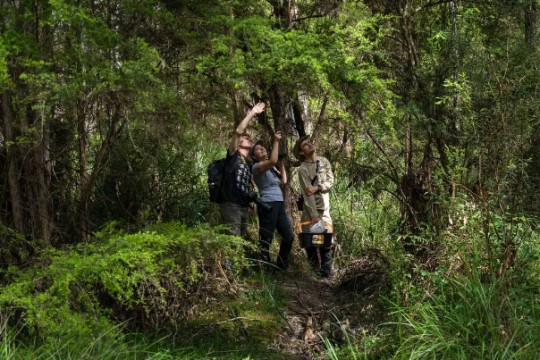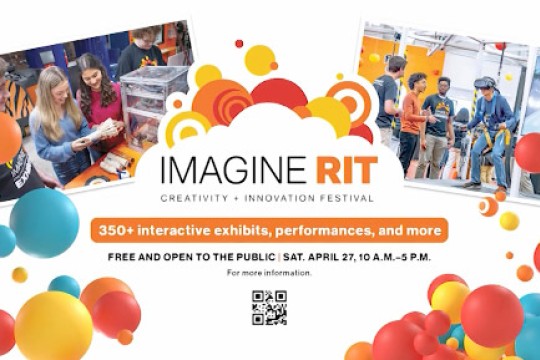RIT Student Wins Scholarship from U.S. Department of Homeland Security
The DHS awarded Bethany Choate, a third-year student in RIT’s Chester F. Carlson Center for Imaging Science, the scholarship based on her academic accomplishments and her field of study. The award will cover her tuition and fees, and provide a stipend during the school year, a paid internship next summer and employment opportunities following graduation.
“I thought the program would be a good opportunity, ” Choate says. “The importance of ensuring safety is definitely a worthwhile thing to partake in.”
The DHS Scholars and Fellows Program, in its second year, was established to support the development and mentoring of the next generation of scientists as they study ways to prevent terrorist attacks within the United States, reduce the country’s vulnerability to terrorism and minimize the damage and recovery efforts from attacks that occur. The award is designed for students interested in pursuing the basic science and technological innovations that will ensure homeland security.
Choate is among the award recipients chosen from 450 undergraduate applicants. Last year, the DHS gave scholarships to 50 undergraduate scholars out of 928 applicants and 50 fellows from among 1,548 graduate applicants. Engineering students comprised nearly one-third of the awards distributed last year followed by computer science and math, psychology and social sciences.
“I think Bethany’s selection for this program clearly shows that the senior leaders in the U.S. Department of Homeland Security appreciate the important role imaging science plays in the accomplishment of their primary mission,” says Joe Pow, assistant director of RIT’s CIS. “I’m confident that she’s just the first of many imaging science students who will benefit from the DHS scholarship program in the future.”
Imaging science can be used in a number of different ways to aid homeland security. Remote sensing—high-resolution satellite or airborne photography—can identify objects, air and water quality, ground conditions and factory emissions, for instance. Other imaging science applications can detect counterfeiting and verify personal identification through biometric applications such as scanning fingerprints or irises.
Choate learned about the field of imaging science in 2001 as a junior at Rush-Henrietta High School participating in CIS’ summer internship program for local high school students.
“One of the things that drew me to imaging science is because it is so open—there’s a variety of things you can do with it,” she says.
Lon Smith, an assistant scientist at CIS and Choate’s supervisor in RIT’s Digital Imaging Remote Sensing laboratory, suggested she apply for the DHS scholarship.
“Bethany is a unique individual who has the proven ability to master the science and mathematical skills required for the imaging science program,” he says. “Bethany is also one of the most creative individuals I have met. I see these attributes as her key to future success in any endeavor she pursues.”For more information about the DHS Scholars and Fellows Program, visit www.orau.gov/dhsed.














